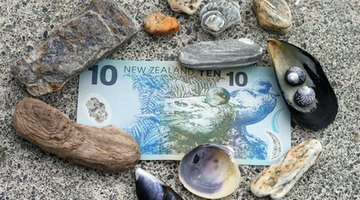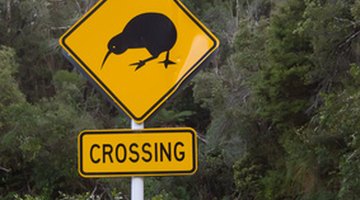Crafts are a hands-on way for children to put something they've learned into practice. Explore and celebrate the rich history, art and cultural traditions of the Maori–the indigenous people of New Zealand before European colonization–through creative projects inspired by the beautiful islands where they live.
Bird Kite
Craft bird kites from newspaper, wooden dowels, string and paint, following the inspiration of a crayola.com lesson plan about Maori bird kites. According to the article, the Maori flew kites "to celebrate their belief that birds could carry messages between people and the gods. Their god Rehua is depicted as a bird and is considered to be the ancestor of all kites." Pre-notch the dowels–one long and one short for each kite. Depending upon the childrens' ages, you may need to assemble the bodies of the kites before giving them to the kids to decorate and fly.

Koru Art
Teach the children about what Maori call the koru, the spiral-shaped frond of a young fern that has yet to unfurl, which is a common motif in Maori carvings. Have them draw their own bright renditions of koru using oil pastels, chalk pastels, and black dye, suggests an article called "New Zealand Koru Art" on kinderart.com. Outline the koru in chalk, drawing double lines instead of single ones, as the article directs. Fill in the outline of the frond as well as the interior and exterior of the double lines. Brush the dye across the page so it fills in the chalk lines.

Kiwi Bird
Make paper kiwis, the small, flightless, territorial New Zealand birds that the Maori see as akin to "elder siblings," being "the oldest in all Tanemahuta's bird family," according to an excerpt from a New Zealand Department of Conservation publication on kiwis. Show children photos of kiwis–or maybe an educational video–and talk about the role of the kiwi in Maori myths. Direct them to make their own kiwis using construction paper, glue and crayons. Cut a brown football shape from construction paper to represent the kiwi's body. Cut a round brown shape to represent its head. Snip a long, thin strip of orange paper for its sensitive beak, two stubby strips for its legs, and eight short, thin strips for its toes. Glue the pieces together. Draw on eyes, fur and very small wings with crayons.

Related Articles
References
Writer Bio
First published at age 17, Kim Durant is an experienced writer with numerous published articles under her belt. A former tutor and community education teacher, she writes primarily about decorating, crafts and other creative pursuits.











